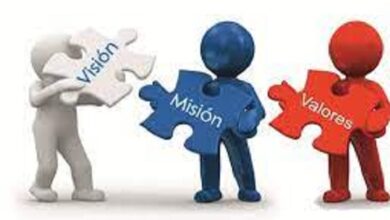What is Training Needs Assessment its benefits and When perform and implementation
Training Needs Assessment(TNA)
Here we will provide you the information about What is Training Needs Assessment its benefits and When perform and implementation.
The Training Needs Assessment (TNA) is nothing more than a set of strategies and actions that aim to gather the necessary data to assist in the decision-making of which employees and teams need training and which training is indicated for each of them .
This goes beyond improving technical skills and considers the competency-based management model .
In addition, TNA must align the investments that will be made in training with the goals and objectives outlined by the company , focusing on improving its results and keeping the business competitive in the market. Training Needs Assessment
What are your benefits?
With TNA , it is easier for HR, together with the board, to determine short, medium and long-term goals more effectively, reducing expenses that will not lead to any results.
But for that to happen, the T&D area needs to create a well-aligned process for performance assessments and strategic data analysis of the team. These data can be easily obtained with the help of HR software.
With this information in hand, managers and leaders are able to effectively determine which training is most relevant according to the moment experienced by the organization.
Therefore, with the right training and qualifications, employees become more engaged and productive, automatically resulting in final consumer satisfaction, making the business a reference in their area of expertise.
When should TNA be performed?
There is no rule that determines the moment to prepare the TNA.
But it is important to carry out a periodic analysis so that the company understands which technical and behavioral skills need to be worked on in the team and if the training that has been offered is having the desired effects.
Also, as everything in running a business requires planning, there are some situations in which it is more common for TNA to be applied. Get to know them now.
1-At the time of hiring
When TNA is already applied in the onboarding process, it is possible to map the new employee’s hard and soft skills and, thus, understand if he needs to undergo specific training so that he can have a better performance in the position, according to the culture of the company. Training Needs Assessment
2-In performance evaluation
Through a performance evaluation questionnaire , it is possible for the T&D sector to identify and analyze, based on the data collected, whether certain employees made the most of the training offered and improved their skills and also developed new skills.
This survey is a highly effective people management tool to compare results and identify strengths and weaknesses of each employee.
3-In creating job and salary plans
The Job and Salary Plan helps HR, together with the leadership, to understand more accurately which T&D path employees with leadership profiles, for example, should follow to reach strategic positions in the company, improving their technical and behavioral skills.
Thus, the company also reduces costs with recruitment and selection, by investing in the employee who is already part of the team.
Such actions also help professionals to feel more motivated and engaged, as they really believe in the possibility of development and growth within the company.
Still, at this moment, TNA collaborates so that the company projects itself in the market as an employer brand.
4-In the relocation of the workforce
In times of crisis, such as the one most companies face as a result of the Covid-19 pandemic, TNA is fundamental in understanding which employees will make the business overcome challenges and regain growth.
When carrying out the study of the Profiler , for example, it is possible to map the behavioral profile of each employee and cross-reference with their performance, in addition to other variables, helping to decide who are the indispensable professionals at this moment for their consumers.
Also, with TNA, it is easier to understand which skills these professionals who will remain on the team need to improve and which they must acquire so that the company does not suffer negative impacts from such relocations.
How to implement TNA in the company?
As already mentioned, the Training Needs Survey is made up of several people management actions and strategies. Now, let’s detail, in a practical way, how to efficiently implement TNA in your company. Check out!
1-Opinion of managers and leaders
Training and development team members need to be aware that they do not work alone.
After all, nothing better than the opinion of leaders about their subordinates to obtain relevant information about which employees need training and how they should be conducted, according to each behavioral profile.
Therefore, take the time to chat with managers and supervisors, ask about the team’s processes, results that each employee has achieved, whether the team has met its goals and/or evolved in recent months.
Through these data, it is possible, more conclusively, to define exactly what training each employee and team needs.
In addition, the managers and leaders themselves can suggest ideas on what training, workshops and lectures can be offered to each member of the team.
2-Performance evaluation
During the reading, we pointed out that evaluating the performance of employees is essential in understanding what training needs to be offered.
Generally, performance evaluation is carried out through online questionnaires or on platforms which seek to understand which soft and hard skills each professional has mastered and which ones they need to improve.
In addition, it is important to assess the performance that each employee obtained in relation to the training offered. For this, a tip is to perform tests on the subject or topic covered before and after the training.
Thus, the T&D sector will have solid data on the use of the training offered and if it achieved the objectives that the company sought.
3-Data analysis and metrics
Today, there is no effective management based on common sense.
When it comes to the Human Resources area , the evolution of the sector allows the HR professional to be armed with solid and strategic data so that decisions can be taken on what training should be offered.
Behavioral profiling, for example, is crucial for effective talent management.
Through it, it is possible to separate employees into groups and direct training courses that really add up, both in the professional and personal sectors of each of them.
Thus, no employee will be discouraged when it comes to carrying out the training required by the company.
In this way, it is less work to choose strategies and actions for the employees’ career development and also specific training, increasing the motivation and engagement of the team members.
4-exit interview
There is nothing more sincere than the opinion of an employee who is leaving the company to understand at which points of training and qualification they need to improve.
At this point, the feedback is usually more sincere, since there is no longer that fear on the part of the professional of losing their job for exposing their point of view about the processes and deficiencies in the organization’s management.
To collect this data, HR may conduct a termination interview . Of course, this conversation should not be mandatory, but the sector should always consult the professional who has been dismissed to find out if he wants to participate.
If the answer is “yes”, it is up to the HR or manager to prepare questions that will really contribute to the company’s development.
It is necessary to collect opinions about products, processes and, of course, which training courses, in the opinion of the employee, were no longer offered so that they could carry out their work in the most effective way and that could have made them develop better as a person and professionally.




